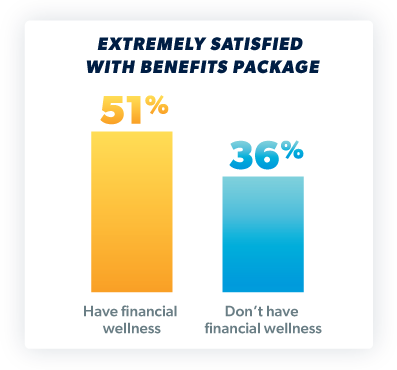
Overview of Benefits
Top Factors in Choosing Benefits
Employers put a lot of thought into choosing which benefits to offer their employees. The cost of the benefit to the employee is the top deciding factor, followed by the value the employee gets from the benefit. Then the impact the benefit has on the employer becomes the focus, with the cost of the benefit to the employer, employee participation (effectiveness) and ease of implementation rounding out the top five.

Cost of benefit to the employee

Value brought to employees from the benefit

Cost of benefit to the employer

Percentage of employees that will use the benefit

Ease of implementation
Top Indicators of Successful Benefits
While the value a benefit brings to employees is the second-most important factor as employers choose benefits, employers see it as the number one indicator of a successful benefit. Simply put: Benefits decision-makers want the benefits they offer to add value to their employees’ lives, so that’s how they measure their success. Other factors that contribute to a benefit’s success include usage (26%), employee feedback (26%), reduction in health care costs (23%), impact to the bottom line (22%), reduction in turnover (14%), and reduction in absenteeism (9%).
Overview of Benefits
Top Factors in Choosing Benefits
Employers put a lot of thought into choosing which benefits to offer their employees. The cost of the benefit to the employee is the top deciding factor, followed by the value the employee gets from the benefit. Then the impact the benefit has on the employer becomes the focus, with the cost of the benefit to the employer, employee participation (effectiveness) and ease of implementation rounding out the top five.

Top Indicators of Successful Benefits
While the value a benefit brings to employees is the second-most important factor as employers choose benefits, employers see it as the number one indicator of a successful benefit. Simply put: Benefits decision-makers want the benefits they offer to add value to their employees’ lives, so that’s how they measure their success. Other factors that contribute to a benefit’s success include usage (26%), employee feedback (26%), reduction in health care costs (23%), impact to the bottom line (22%), reduction in turnover (14%), and reduction in absenteeism (9%).

of employers say the value a benefit delivers to employees is the top indicator of a successful benefit.
Benefits Satisfaction
Most benefits decision-makers say there’s room for improvement for their current benefits packages. Only 4 in 10 are extremely satisfied with their current offerings. But for those who include a financial wellness benefit in their packages, that number jumps to 51%. And for those who don’t offer financial wellness, the number drops to 36%.

The Benefits Landscape
To get an overview of the benefits landscape as a whole, we asked decision-makers which benefits they currently offer their employees. Unsurprisingly, the most common benefits like health insurance, paid time off and retirement savings plans topped the list while mental health benefits rounded out the top 10. What’s missing? Financial wellness. Only 3 out of 10 currently offer a financial wellness benefit.
TOP 10 BENEFITS CONSIDERED

Health insurance

Paid time off

Retirement savings plans

Life insurance

Dental insurance

Vision insurance

Health and wellness programs

Disability insurance

Employee assistance programs

Mental health/emotional well-being services
TOP 10 BENEFITS CONSIDERED

Top 5 Benefits Considered
But financial wellness could soon claim a spot in the top 10 most common employee benefits. It’s the number one benefit employers are looking to add in the next 1–2 years (of those who don’t currently offer financial wellness). Student loan repayment assistance, professional development, diversity training and mental/emotional health benefits follow closely behind.

Financial wellness benefit

Student loan repayment assistance

Professional development

Diversity training and initiatives

Mental health/emotional well-being services

With just 3 out of 10 employers currently offering a financial wellness benefit, it’s clear that many companies can do more to improve the personal financial health of their employees. If it’s a matter of benefits satisfaction, what we saw earlier says it all—51% who have a financial wellness benefit are extremely satisfied with their benefits package as a whole, while only 36% who don’t offer one can say the same. So, if benefits satisfaction is driven by value provided to the employee, what else is there to say?
Top 5 Benefits Considered
But financial wellness could soon claim a spot in the top 10 most common employee benefits. It’s the number one benefit employers are looking to add in the next 1–2 years (of those who don’t currently offer financial wellness). Student loan repayment assistance, professional development, diversity training and mental/emotional health benefits follow closely behind.


With just 3 out of 10 employers currently offering a financial wellness benefit, it’s clear that many companies can do more to improve the personal financial health of their employees. If it’s a matter of benefits satisfaction, what we saw earlier says it all—51% who have a financial wellness benefit are extremely satisfied with their benefits package as a whole, while only 36% who don’t offer one can say the same. So, if benefits satisfaction is driven by value provided to the employee, what else is there to say?

Want to read this later?
Enter your email and we'll send you a link so you can read the study later and learn more about SmartDollar, Dave Ramsey's financial wellness benefit.

